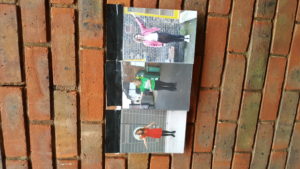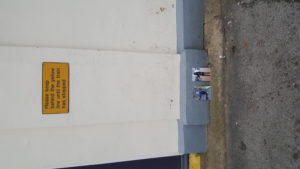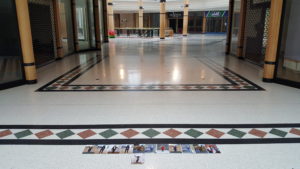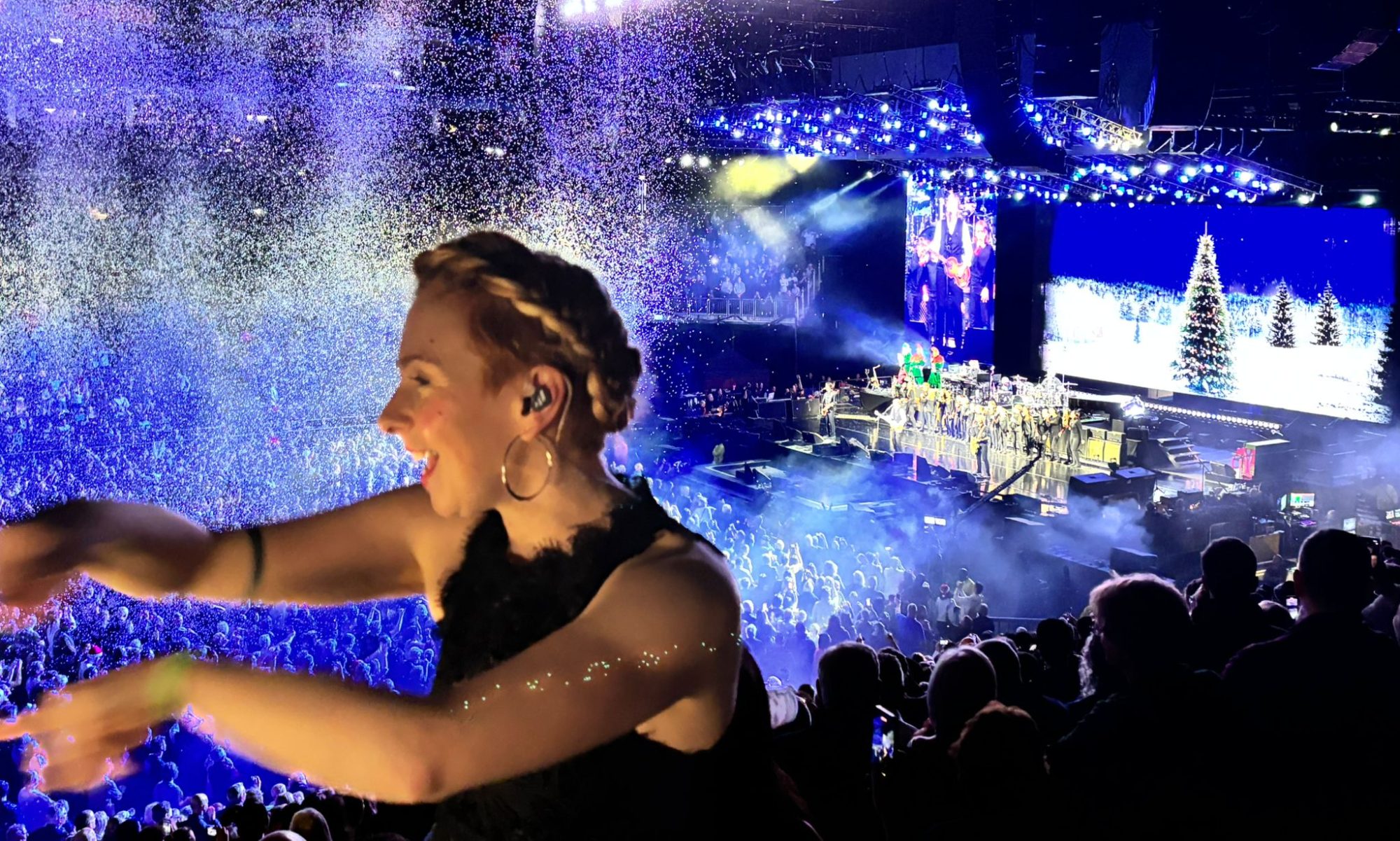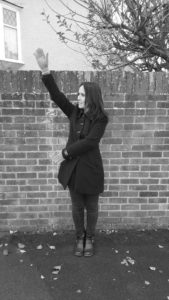
During the Motherhouse residency in Sep/Oct I started taking photographs of the women artists that I met. I asked them to take on semaphore poses to begin a collection of images that I could use as an alphabet.
This work came from the film that I did earlier in the year, ‘Statements in Semaphore’ where I used semaphore signals to signal words from within the national archives.
For this alphabet collection I wanted to start gathering images of others, using the poses. A static alphabet. I also wanted to use the alphabet as a mechanism for speaking to women, so I met with both artists and also local women. I was able to talk about my work and their thoughts on what I was doing.
During October and November I met and photographed 25 women (I did not photograph the pose for the letter X and later this became of interest to me, as I was of using on feminist issues and the X can represent the X chromosome, the male chromosome…….).
Over this time I also created my application to Arts Council England, proposing a residency across 2017 with FiLiA. I intend for this project to be a place of research and work development that both instigates work and informs it.
In December 2016 I had an opportunity to exhibit the work that I was developing with the semaphore alphabet.
At UCA in Farnham I placed colour photographs of the images in two formations on two walls. The first was in a crossword formation, with a black square painted beneath to form the black spaces. This formation was titled ‘I’m A Good Girl Keep Him Satisfied’. The lyrics to a recent pop song encouraging women to keep men through sexual activity. The second formation was of a word search, again on a black painted background. This bore the title ‘She has everything a woman could want’, this being a phrase that I had recently been told by someone I know. Both of these phrases struck me by the common use of such lyrics and such chatter. Assumptions and expectations of what women may want, what men may want and the roles women have in ‘providing’ this, and how some people still see women’s desires as limited to a few material or domestic possessions/circumstances.
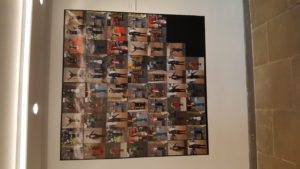
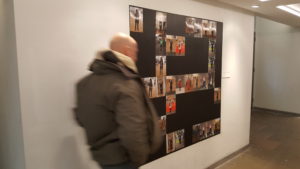
I chose to use the word puzzles as an extension of the translation and coding that I utilise in my work. By placing the images in these formations the viewer begins to get a sense that there may be a code present.
What I struggled with was keeping the image static, so I chose instead to take pieces of the work out of the gallery each day. Each day I returned and took a few more, eventually leaving only a few images that I reconfigured into a messy collage. The images that I took out of the gallery I placed instead in public spaces near to where some of the original photographs had been taken. In a shopping centre in Aldershot, in the train station at Aldershot and at London Liverpool Street Station. Taking the images back out to the public felt very necessary for the work. It for me is about bridging a gap between public and private space within art, or perhaps between spaces seen as privileged and not.
